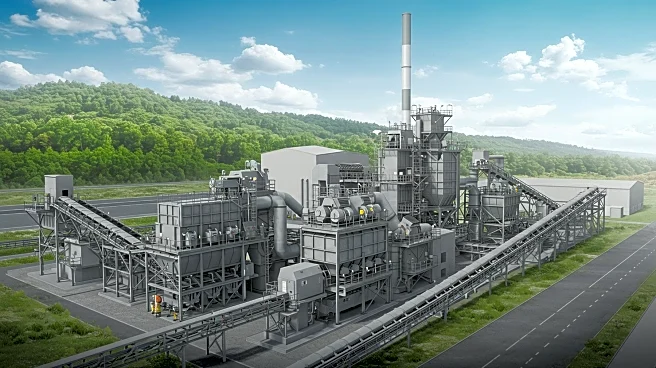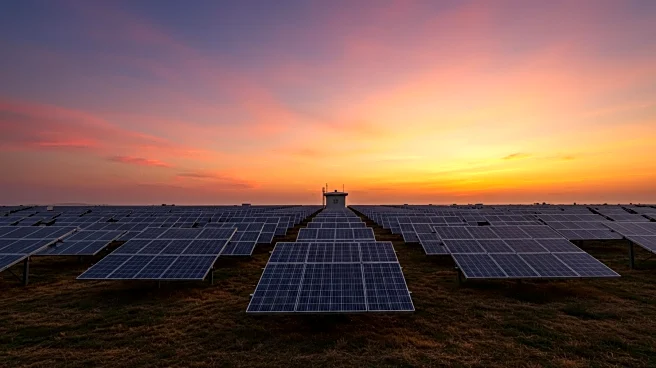What is the story about?
What's Happening?
India has reached a significant milestone in its energy transition, with non-fossil fuels now accounting for half of its installed energy capacity. This achievement comes five years ahead of schedule, as part of India's commitment under the Paris Agreement. Despite this progress, coal remains the dominant source of electricity, powering over 74% of the country's energy needs. The challenge lies in balancing the growth of renewable energy with the continued reliance on coal, which is crucial for meeting current power demands.
Why It's Important?
India's energy transition is critical for global climate efforts, given its status as the third-largest greenhouse gas emitter. The shift towards renewable energy sources like solar and wind is essential for reducing emissions and achieving net-zero targets. However, the reliance on coal highlights the practical challenges of transitioning to cleaner energy, especially in a rapidly growing economy. India's efforts to increase storage capacity and explore alternative solutions like pump-hydro energy storage are vital for overcoming these challenges.
What's Next?
India plans to continue expanding its renewable energy capacity, with a focus on improving storage solutions to reduce dependence on coal. The government is considering various strategies, including pump-hydro energy storage projects, to enhance energy reliability. Collaboration with international partners, particularly in securing rare earth metals for battery production, will be crucial for advancing India's clean energy goals.
AI Generated Content
Do you find this article useful?











